Why CBDCs Risk Inheriting Blockchain’s Worst Flaws
Governments developing CBDCs risk repeating the same architectural mistakes made by early public blockchains – especially by adopting flawed standards like ERC-20.

What is a CBDC?
CBDC – Central bank digital currency, digital money issued by the central banks of states. CBDC has backing by assets that are legitimate for the country’s economy with two-way convertibility, most often the backing asset is the national currency and precious metals, for example: US Dollar, Euro, gold, etc.
CBDC is not new money, but only a new form of money supply already issued into the economy and, as a consequence, has the same legal status as fiat money supply.
The history of experiments with CBDC dates back to the 1990s, long before the debut of the first public blockchain – Bitcoin. The first working project is considered to be prepaid Avant debit cards in Finland. CBDCs can be based on traditional architecture without using a distributed ledger, for example, E-CNY (China’s digital yuan). But with the arrival of the blockchain industry, CBDC received a new wave of interest from national governments and central banks.
By target audience, CBDCs are divided into two main types:
Wholesale CBDCs: Used by financial institutions for settlements among themselves, helping with liquidity management and monetary policy implementation.
Retail CBDCs: Intended for businesses and consumers, providing direct use of central bank digital money.
Advantages of CBDCs based on distributed ledgers
- Faster payments. The use of blockchain implies a reliable system of transaction validation between participants and the use of a single unified system, which reduces intermediary nodes and speeds up the transaction effectively to the time set for the creation and finalization of a block. For example, the average block creation time of Ethereum is 12 seconds, block finalization reaches 13–15 minutes (2 epochs). 15 minutes is relatively fast for most national financial systems. Block finalization on EOS takes only 1 second. While a transfer through the SWIFT system can take several days.
- Lower transaction costs. Architecturally, a peer-to-peer distributed ledger system is simpler and cheaper than the current variety of hardware and software of payment services. For example, one can review the fee schedule page of the Wise service.
- Fault tolerance. Blockchain systems have a distributed structure and no single point of failure; each archival node stores the entire history of transactions, which also allows abandoning a large amount of backup equipment.
- Centralization and enhanced control. Blockchain implies transparency of transactions and a single ledger. A CBDC system implies full identification of the end user. Government authorities receive broader and more operational control over transfers than the current system with intermediaries in the form of commercial banks. If we compare CBDC with cash, the degree of control can be assessed as total control. From the point of view of the state, the following increase: efficiency of the tax system; national security; a number of financial crimes become impossible.
In 2021 reports showed that 86% of central banks were studying CBDCs, 60% were experimenting, and 14% were in the stage of launching a pilot project. In 2023, a report by the Organization for Economic Cooperation and Development (OECD) showed that 94 central banks were already showing interest in CBDCs. According to an article by the International Monetary Fund (IMF) from 2024, the share of interested banks grew to 94%, and by 2030 up to 15 CBDC systems may be operational.

State of CBDCs around the world: VISA
In addition to CBDCs, commercial banks are also considering issuing their own stablecoins and RWA assets for interbank exchange, effectively competing not only with commercial stablecoins such as USDT but also with CBDCs.
The Moral Dilemma of CBDCs
The main claim against CBDCs from society is the risk of increased control and restriction of civil rights. And this is a fairly reasonable concern. CBDCs have quite a lot of critics, and if politicians among them are simply hypocrites while in opposition, the words of crypto enthusiasts and technical experts are actually worth considering.
Edward Snowden, a former NSA employee known for his revelations, wrote a rather interesting publication criticizing CBDCs.
Here is what Snowden writes on his social network X:
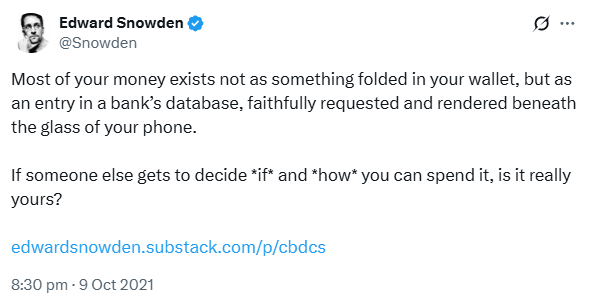
However, Edward Snowden’s post can safely be attributed to the already existing financial system, from which it follows that it is already too late to sound the alarm.
The financial system existing today also operates with digital money, the only difference being that it is issued by commercial banks through issuing debit and credit cards, opening accounts, which are backed by funds received from central banks. Most of the population with official employment receive their salaries into bank accounts. In order to work with these financial instruments, users are fully identified. And as practice shows, even with nominal banking secrecy, government authorities can gain access to the information they are interested in.
For example, Ukraine’s legislation is moving toward abolishing banking secrecy without CBDCs. User accounts are frozen at the slightest suspicion even now, one of the latest cases occurred in Thailand, where 3 million accounts were frozen.
In fact, CBDC is an analogue of private corporate stablecoins such as USDT or USDC. Stablecoins, without exaggeration, are the type of cryptocurrency without which today’s cryptocurrency market is unthinkable, and they are also issued in a way far from the philosophy of true “blockchain money,” which Satoshi Nakamoto and other crypto punks preached. But everyone loves stablecoins, and CBDCs evoke unpleasant associations with a concentration camp.
Ultimately, it all comes down to who and how will use such an instrument as CBDC. History shows that many instruments intended to improve society can be directed against it.
Edward Snowden himself, although he told the world about crimes against civil liberties by a leading intelligence agency, in fact contributed to these crimes himself.
The Slippery Slope of CBDC ERC-20
Technically, a CBDC can be a token (smart contract) at the application level. Or a CBDC can be in the form of the native currency of the blockchain used. However, the token option today looks like the only correct path, since it offers a more flexible implementation of the token contract itself, broader functionality, and simpler support, since for an upgrade or fix of the token it is not necessary to hard fork the entire blockchain.
For the choice of platform for implementing CBDCs, there are two opposite concepts:
- The choice of a private corporate-level blockchain. The blockchain remains closed for public use and independent connection. Such a system is characterized by: flexible configuration of transaction speed and choice of consensus; transaction execution fees (gas) may be absent; increased security due to restricted access to the system. Perfectly suitable for wholesale CBDCs. An example of such a private blockchain is mBridge, later transformed into BRICS Bridge, intended for cross-border payments between BRICS countries as a replacement for the SWIFT system.
- The choice of a public blockchain is rational for retail CBDCs. Since it allows: covering a large user base; integrating CBDCs into existing applications and services; and also attracting crypto market liquidity into the national economy. Platforms such as Polygon and Ethereum are often chosen for testing CBDCs based on smart contracts, and Ripple even launched the “Ripple CBDC Platform,” subsequently signing agreements with a number of countries. However, when choosing a public blockchain for implementing CBDCs, one has to accept all its architectural features, as well as the fact that in a public blockchain smart contracts are also accessible to citizens with ill intent.
As can be seen from the above characteristics, each approach to implementing CBDCs is perfectly suited for its niche. And if we have no particular questions about existing private blockchain implementations, at least due to the closed nature of the system and documentation, then with CBDC implementations, even in experimental mode, questions already arise. In particular, the choice of the ERC-20 token standard.
In May, the Federal Reserve Bank of New York and the Bank for International Settlements (BIS) conducted transactions within the program “Central Bank Open Market Operations with Smart Contracts.” Ethereum was chosen as the blockchain environment, and ERC-20 was chosen as the token standard for CBDCs with all the resulting problems when sending to smart contracts, which led to multimillion-dollar losses.
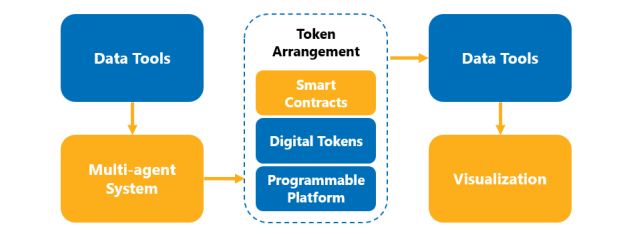
Project Pine scheme
“The token arrangement sits at the center of the system. It includes a programmable platform that houses the smart contracts making up the central bank toolkit and the tokens with which they interact “
,BIS
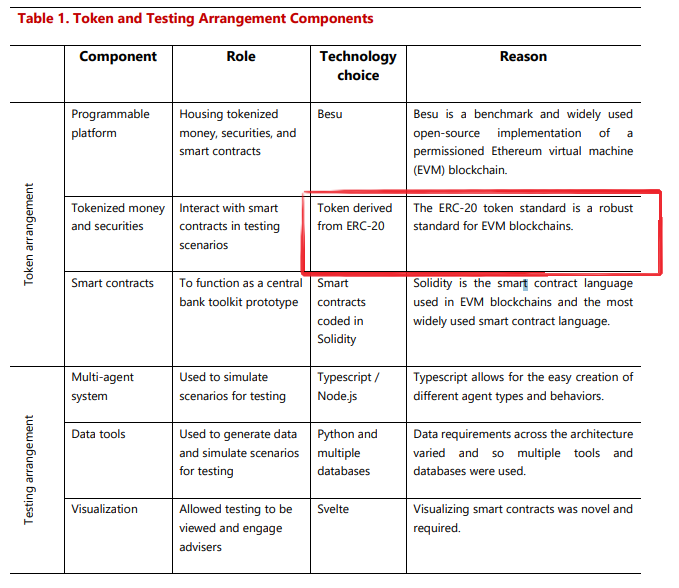
System components: BIS
UBS, Sygnum Bank and PostFinance in September are also conducting testing on the public Ethereum blockchain using ERC-20 tokens as the basis of CBDCs.
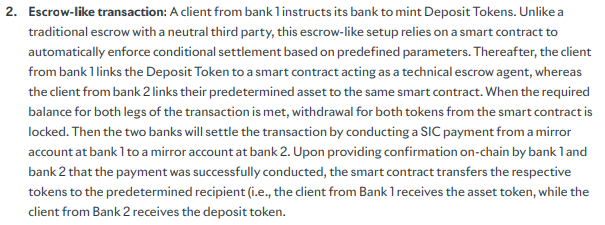
Delegation to a smart contract of the role of escrow agent: Swiss Banking
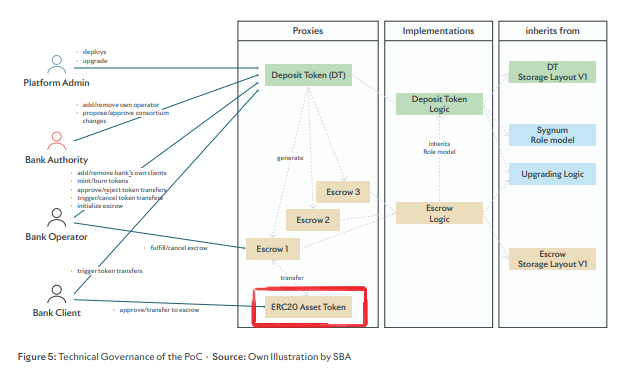
System interaction diagram based on deposit tokens: Swiss Banking
Explainer video: Swiss Franc Deposit Token
The two largest banking systems use in the core of their system a standard with a long-known vulnerability, when an error in an address consisting of 42 characters can simply lead to the loss of funds. For now, the public has no code of any CBDC, but surely, like most stablecoins, the smart contract design of CBDCs will provide for: a blacklist; the possibility of freezing; burning and reissuing tokens. However, despite the same capability of corporate stablecoins, lost USDT, USDC and others still exist in the networks. For example, USDT restores only large sums. Formally, Tether can restore funds lost by mistake, but for a 10% fee or $1000, whichever is greater. Already from this condition, it is clear that requests are accepted if the amount of funds is above $1000. Who will solve issues with lost CBDCs and why even allow the possibility of such errors still remains a mystery?
Since 2017, there has been the ERC-223 standard for fungible tokens, which applies a communication model preventing the sending of tokens to a non-target smart contract. The same communication model is used by the NFT standard ERC-721.
According to the design of the reference ERC-223, it lacks transferFrom and approve, however, hybrid ERC-223 tokens that have these functions for compatibility with existing DeFi feel great and at the same time are protected from direct transfers to old versions of contracts unable to communicate with ERC-223 tokens. Thus, it cannot be said that there is no alternative to ERC-20 in the cryptocurrency space.
Conclusion
CBDCs, like any new tools, cause fear of possible consequences, both from the moral aspect and from the security side.
Meanwhile, it is worth recognizing that the introduction of debit cards also caused concerns about the possibility of abolishing cash and tightening control.
As for security aspects, the existing system is also flooded with various fraud schemes, and even the SWIFT system is subject to multimillion-dollar hacks: the incident with the Bank of Bangladesh; theft of funds from Banco del Austro; the hacker group Shadow Brokers accused the NSA of gaining unauthorized access to the SWIFT system.
According to a report published by FinCEN in August, only US banks laundered $312 billion over 4 years. According to Chainalysis estimates, over the same time, $189 billion was laundered through digital assets in total. According to UN data, more than $2 trillion is laundered annually worldwide.
If CBDCs are meant to represent the future of money, then their foundations must not be built on outdated and flawed standards like ERC-20. Choosing safer, more modern architectures like ERC-223 is not just a technical upgrade – it’s a necessity for trust, resilience, and fairness in tomorrow’s financial system.
Note: This analysis is entirely the author's vision. It is not a call to action or investment advice.This article is for informational purposes only and does not constitute financial advice. Investing involves risk, and you should consult a qualified financial advisor before making any investment decisions. Original reporting sources are credited whenever appropriate and as required.
